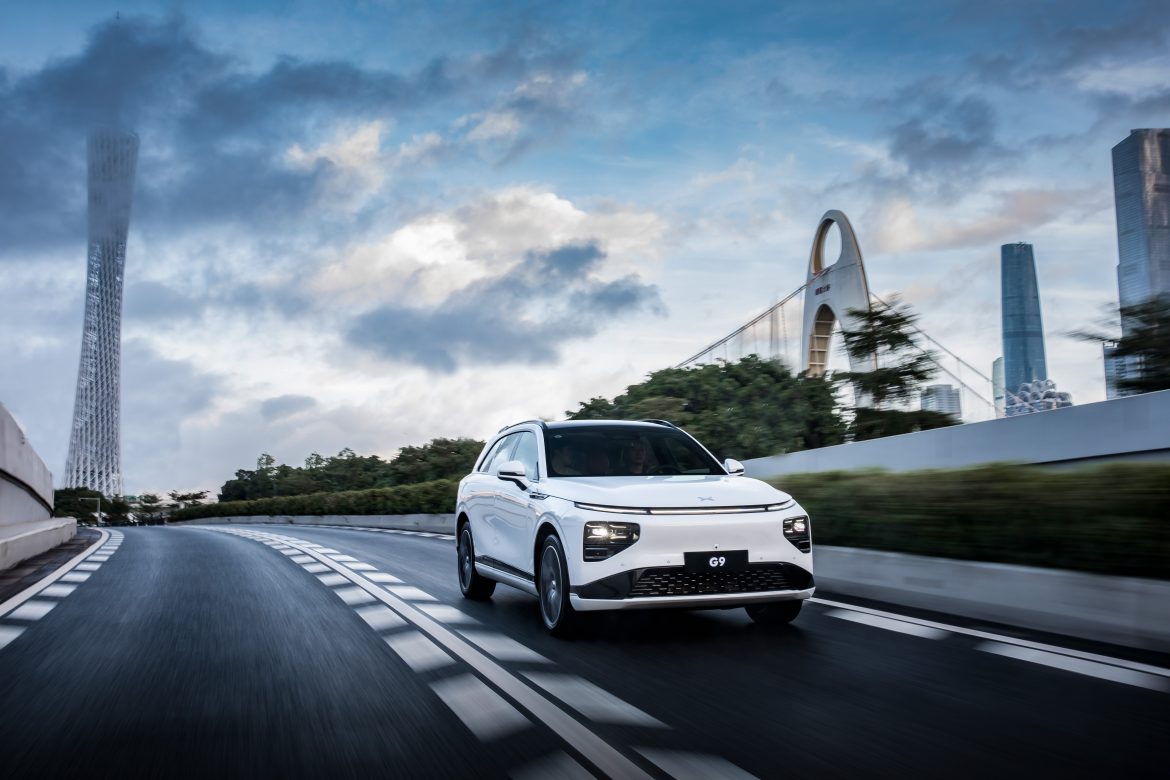Chinese smart EV company XPeng unveiled a series of technical innovations at its fourth annual 1024 Tech Day in Guangzhou. The event featured next-generation neural network-based perception architecture, closed-loop AI and data management platform, voice and smart cabin technologies, and the latest developments in its mobility ecosystem, including latest robotaxi, flying car and robotics endeavors.
Introduced at the Flagship SUV G9 launch in September, XNGP is designed to be XPENG’s last step before full autonomous driving is realized, offering advanced driver assistance in the full spectrum of driving scenarios from highways and carparks to complex city roads and urban expressways. XNGP also achieved a technological breakthrough in expanding it to areas not covered by high-precision maps, nationwide.
XNGP is supported by significant hardware upgrades, including 508 TOPS of computing power, dual-LiDAR system, 8-megapixel HD cameras and a new software architecture XNet, backed by a closed-loop, self-evolving AI and data system.
XPENG unveiled its next-generation neural network-based software architecture XNet on Tech Day. Different from the first-generation visual perception architecture, XNet adopts an in-house developed deep neural network for visual recognition with human-like decision making capabilities, drawing from multiple cameras’ data. The neural network technology supersedes complicated manual processing logic to achieve a self-evolving data-driven algorithm.
XPENG’s XNet-empowered autonomous driving technical stack is backed by Fuyao, China’s largest supercomputing center for autonomous driving. Supported by Alibaba Cloud’s intelligent computing platform, supercomputing capability at Fuyao can reach 600PFLOPS, increasing the training efficiency of autonomous driving model by over 600 times. That’s to say, time spent can be reduced from 276 days to 11 hours for a model training.
AI and data platform for autonomous driving
XPENG has established China’s first fully closed-loop autonomous driving data system, encompassing data collection, labeling, training and deployment. Supported by a full auto-labeling system (able to complete 2,000 people/year’s labeling work in 16.7 days), and Fuyao’s supercomputing capability, every detected corner case can be addressed by utilizing a targeted data collection approach to acquire a massive amount of training data from its mass-produced vehicle fleet.
XPENG’s high-efficient AI capabilities enable consistent and unsupervised machine leaning and rapid iterations in training models, resolving over 1,000 rare corner cases each year. This highly efficient closed-loop AI and data system has helped reducing incident rate for the Highway NGP by 95%.
Robotaxi
XPENG’s G9 SUV became China’s first mass-produced commercial vehicle to pass the government-led Autonomous Driving Closed-field Test, a major step forward in XPENG’s robotaxi development. The test was completed in accordance with the requirements of the autonomous driving function test for intelligent connected vehicles in Guangzhou, a tier-one city in China.
“Obtaining the road test permit by our mass-produced commercial vehicles – with no retrofit – is a major achievement,” said Dr. Wu on Tech Day. “Our platform-based robotaxi development aims to generate significant cost benefits, and ensure product quality, safety and user experience.”
Voice system
XPENG is the automotive industry’s first brand to utilize in-house developed underlying voice technologies, and first to incorporate Multiple Input Multiple Output (MIMO) multi-zone technology for its new generation of in-car voice system.
XPENG’s all-scenario voice system 2.0 version, unveiled earlier, recognizes commands from every passenger in the cabin and understand instructions across multiple streams of conversations with an accuracy rate that exceeds 96%. Capable of responding to instructions without an activation command or even internet connection, the voice system 2.0 performs takes less than one second from command receipt to execution, delivering interface feedback in 245ms and voice feedback in less than 700ms.
XPENG will make its industry’s first whole-car, always-on voice system as standard on all new vehicles in China.
eVToL
XPENG unveiled the latest version of the world’s first full-electric vertical take-off and landing (eVToL) flying car, developed by its ecosystem affiliate XPENG AEROHT. Optimized from last year’s horizontal dual-rotor structure to a new distributed multi-rotor configuration, the overall system design complexity has also been reduced to further enhance flight safety and reliability. The test vehicle of the new flying car has successfully completed its maiden flight as well as multiple single-motor failure tests.
In driving mode, it is comparable with any conventional car in terms of functionality and measurement. In flight mode, the flying car is piloted using the steering wheel and the right-hand gear lever as controls to move forward and backward, make turns, ascend, hover and descend.
AI-powered robot features
XPENG is leveraging its AI capabilities to empower robotic intelligence. Its equine robot prototype has been upgraded with a new design to better support multi-degree-of-freedom (MDOF) motion, and locomotion capabilities.
The new design also features a more sophisticated mechanical structure with higher transmission efficiency, a stronger robot actuator, a high-end auto-grade computing platform, and battery and thermal management system. Its motion control system has been significantly upgraded to better adapt with complex indoor and outdoor terrain conditions such as stairs, steep slopes and gravel roads.

